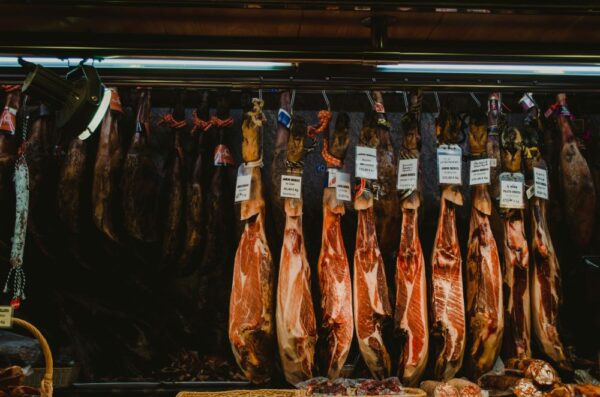We’re going back to our butchery class to answer the question, what is ham?
I can tell you that growing up, a lot of the families I knew would have ham on Easter, and I can also tell you that most would have ham without knowing the reasoning behind it. Ham is pork from the hind leg of the pig. That’s it, that’s the very broad definition. At this point the ham would be considered fresh ham. It can now be preserved by wet or dry curing, with or without smoking. This definition is actually quite open, so there might be a lot of different food products out there that you would consider ham, even if you’ve never thought of it that way. Italian Prosciutto, Spanish Jamon, American Country Ham, French Bayonne Ham, German Black Forest Ham, etc. The word ham actually comes from the word hom, which refers to the back of the knee from a Germanic base meaning, ‘be crooked’. This term would later come to mean the back of the thigh.
Now to the roots of eating ham in the spring; The short of it has to do with ham being less expensive than lamb (which would also be eaten during spring holidays) as well as the timeline for preserving hams. Pigs would be slaughtered in the fall (right before they were fed with nuts and apples adding to the flavor), preserved through the winter, and ready to eat come springtime.

Photo by Z S on Unsplash




0 Comments